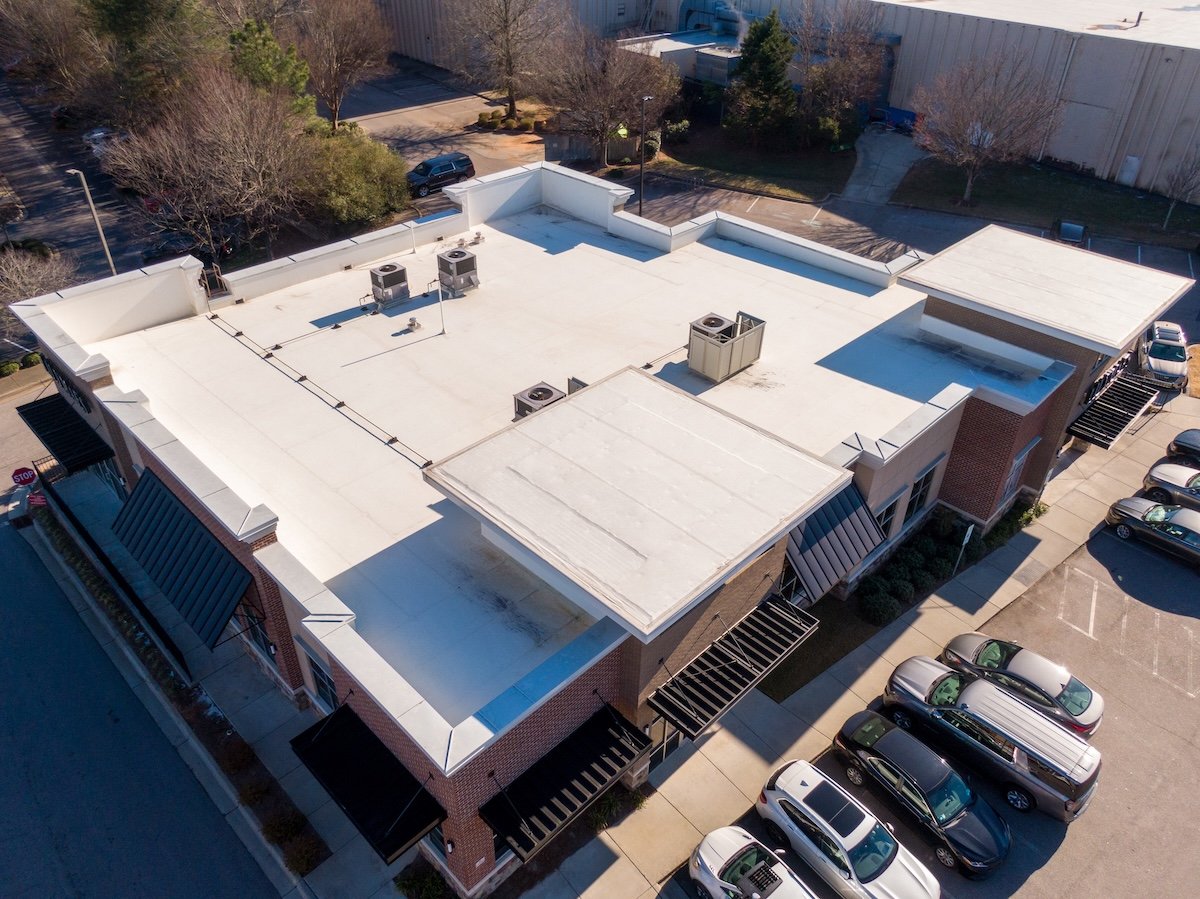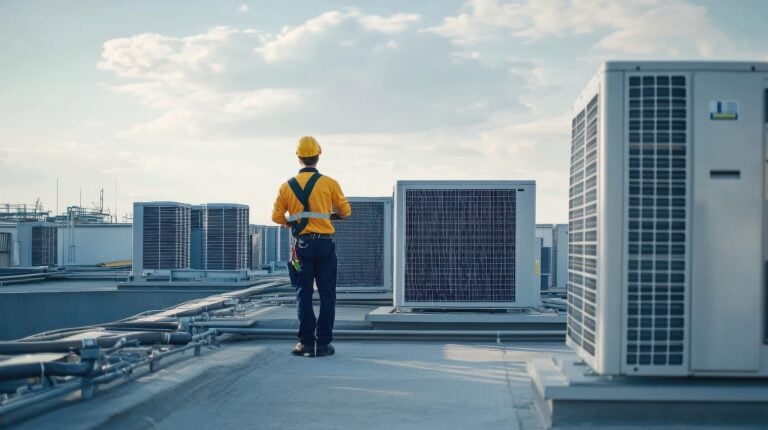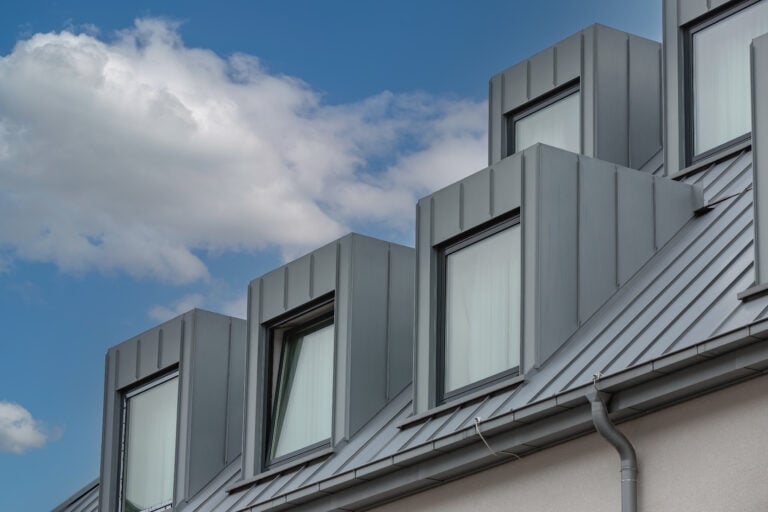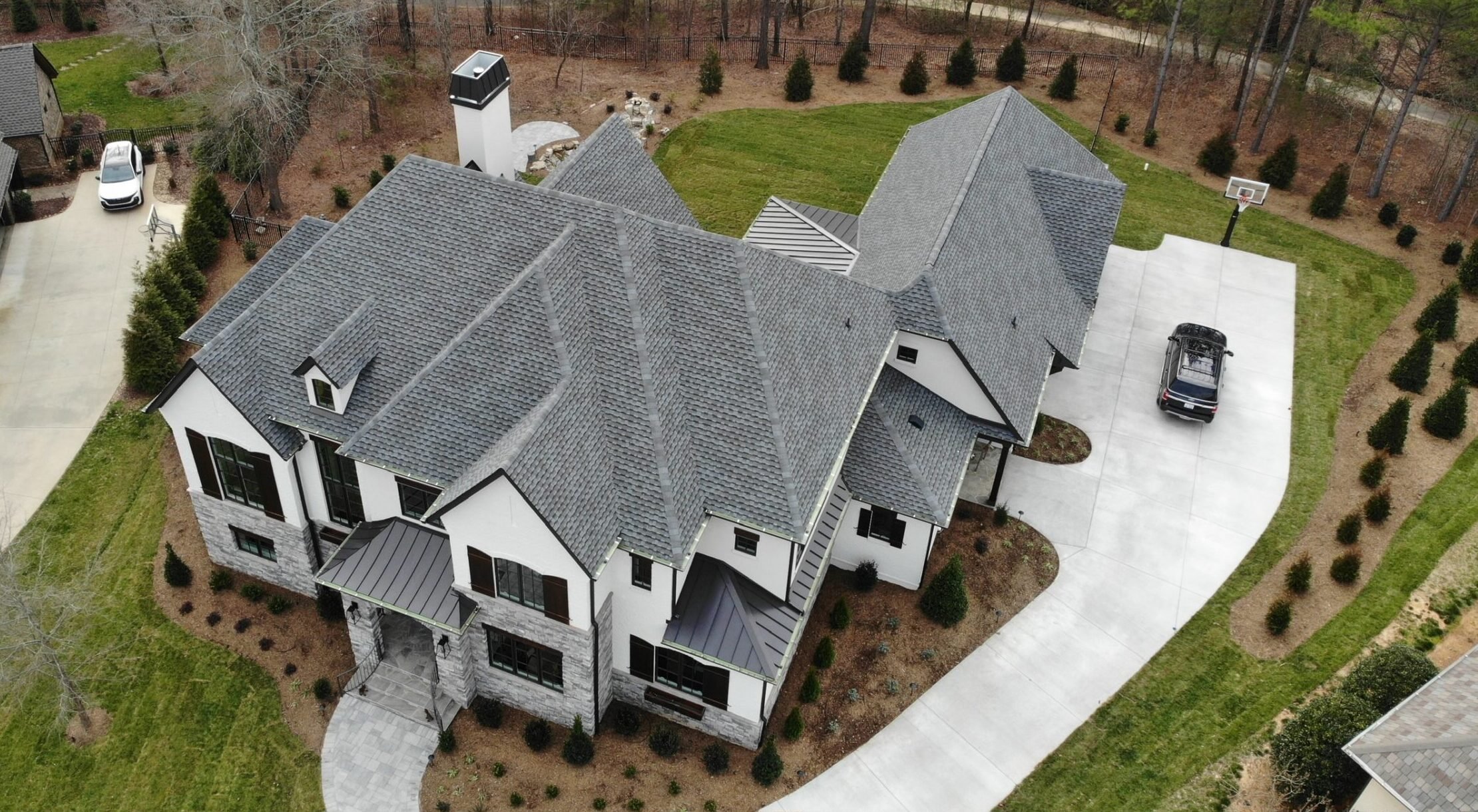6 Best Commercial Roof Maintenance Practices for 2025
Posted 8.20.25 | 5 Minute Read

Commercial buildings face unique roofing challenges that can significantly impact your business operations and bottom line. Without proper maintenance, small issues can quickly escalate into costly repairs or complete roof replacements that disrupt your daily operations.
Effective commercial roof maintenance protects your investment, ensures employee safety, and maintains optimal working conditions for your business. This comprehensive guide covers the essential practices every business owner should know to keep their commercial roof in peak condition throughout 2025.
Here’s what we’ll cover:
- Understanding the importance of regular commercial roof maintenance
- Essential maintenance practices that extend roof lifespan
- Creating an effective maintenance schedule
- Professional inspection and maintenance services
🤔 Why Commercial Roof Maintenance Matters More Than Ever

Commercial roofs endure constant exposure to harsh weather conditions, temperature fluctuations, and environmental stressors. Unlike residential roofs, commercial systems often support additional equipment like HVAC units, satellite dishes, and ventilation systems, creating more potential failure points.
Regular maintenance prevents minor issues from becoming major problems. A small leak can lead to structural damage, mold growth, and expensive interior repairs that far exceed the cost of routine upkeep. Additionally, well-maintained roofs provide better energy efficiency, reducing your heating and cooling costs throughout the year.
Essential Commercial Roof Maintenance Practices
- Conduct monthly visual inspections to spot damage early, such as cracked membranes, ponding water, loose flashing, clogged gutters, or debris buildup. Document findings with photos and dates.
- Maintain proper drainage by cleaning gutters, downspouts, and roof drains monthly or after storms to prevent water backups that can cause leaks or structural damage.
- Inspect HVAC equipment regularly, ensuring units are secure, isolation pads are intact, and surrounding areas are clear of debris or vegetation.
- Check sealants and flashing every six months for cracks, gaps, or wear, and promptly replace with manufacturer-approved materials to prevent leaks.
🧰 6 Best Commercial Roof Maintenance Practices for 2025

Proper commercial roof maintenance protects your investment and extends the lifespan of your roof. Following best practices helps prevent costly repairs and ensures your building stays safe and efficient.
1. Implement Preventive Maintenance Schedules
Create detailed maintenance calendars that include monthly, quarterly, and annual tasks. Monthly activities should focus on visual inspections and basic cleaning. Quarterly tasks include more thorough drainage system checks and sealant inspections.
Annual maintenance involves professional inspections, material testing, and comprehensive system evaluations. Schedule these activities during mild weather periods when possible.
2. Establish Emergency Response Protocols
Develop clear procedures for handling roof emergencies like storm damage or sudden leaks. Identify reliable emergency roofing contractors before you need them, and keep their contact information readily available.
Create emergency supply kits with temporary patching materials, tarps, and basic tools. Quick response to roof emergencies minimizes damage and reduces repair costs.
3. Document Everything Thoroughly
Maintain detailed records of all maintenance activities, repairs, and inspections. Include photos, dates, weather conditions, and descriptions of work performed. This documentation helps track roof performance over time and supports warranty claims.
Digital record-keeping systems make information easily accessible and shareable with roofing professionals, insurance adjusters, and facility managers.
4. Train Your Staff Properly
Educate facility maintenance staff about basic roof safety and inspection techniques. Proper training prevents accidents and helps identify problems early. However, emphasize that complex repairs should always be left to qualified roofing professionals.
Safety training should include proper ladder use, fall protection, and weather awareness. Never allow untrained personnel to work on roofs or attempt major repairs.
5. Plan for Seasonal Challenges
Adjust maintenance activities based on seasonal weather patterns in your area. Spring inspections should focus on winter damage assessment and drainage preparation for heavy rains. Summer maintenance emphasizes heat-related expansion issues and UV damage.
Fall preparations include debris removal and weatherproofing before winter storms. Winter activities focus on snow load monitoring and ice dam prevention.
6. Invest in Professional Services
While basic maintenance can be handled internally, complex inspections and repairs require professional expertise. Licensed roofing contractors have specialized tools, training, and experience to identify problems that untrained eyes might miss.
Professional services also ensure that repairs maintain manufacturer warranties and comply with local building codes. The cost of professional maintenance is minimal compared to premature roof replacement.
🛠️ Creating Your Maintenance Schedule

Successful commercial roof maintenance requires consistent scheduling and execution.
- Create a master calendar: Include manufacturer recommendations, local weather patterns, and your business operations.
- Schedule maintenance strategically: Plan major activities during slower business periods when possible.
- Coordinate tasks: Align maintenance with other building upkeep to improve efficiency and reduce disruptions.
- Factor in seasons: Plan roof work for spring and fall, as summer heat and winter conditions can restrict certain activities.
🏢 Professional Inspection Benefits
Professional roofing inspections provide expertise that goes beyond basic visual checks.
Detecting Hidden Issues
Qualified contractors use specialized equipment to detect moisture intrusion, thermal bridging, and structural issues that aren’t visible during routine inspections.
Expertise in Building Codes and Best Practices
Professional inspectors understand local building codes, manufacturer specifications, and industry best practices. They can spot problems early and recommend cost-effective solutions.
Benefits for Warranties and Insurance
Regular professional inspections often qualify for extended manufacturer warranties and help validate insurance claims. Many insurance companies require inspections for coverage on older commercial buildings.
👨🔧 Trust Great State Roofing for Your Commercial Maintenance Needs
At Great State Roofing, we understand that your commercial roof maintenance needs are unique to your business. Our team brings years of experience working with commercial properties throughout the Charlotte area, and we’re committed to providing the exceptional service that keeps your operations running smoothly.
Don’t wait for small problems to become major expenses. Contact Great State Roofing today to schedule your comprehensive roof inspection and learn how our maintenance programs can protect your investment. Request a quote online to get started with the commercial roof maintenance your business deserves.






